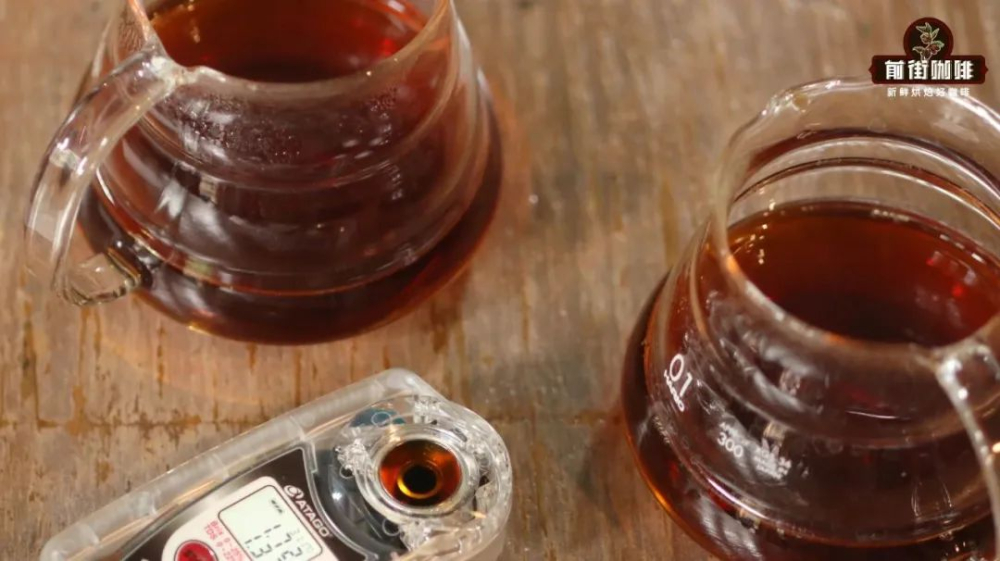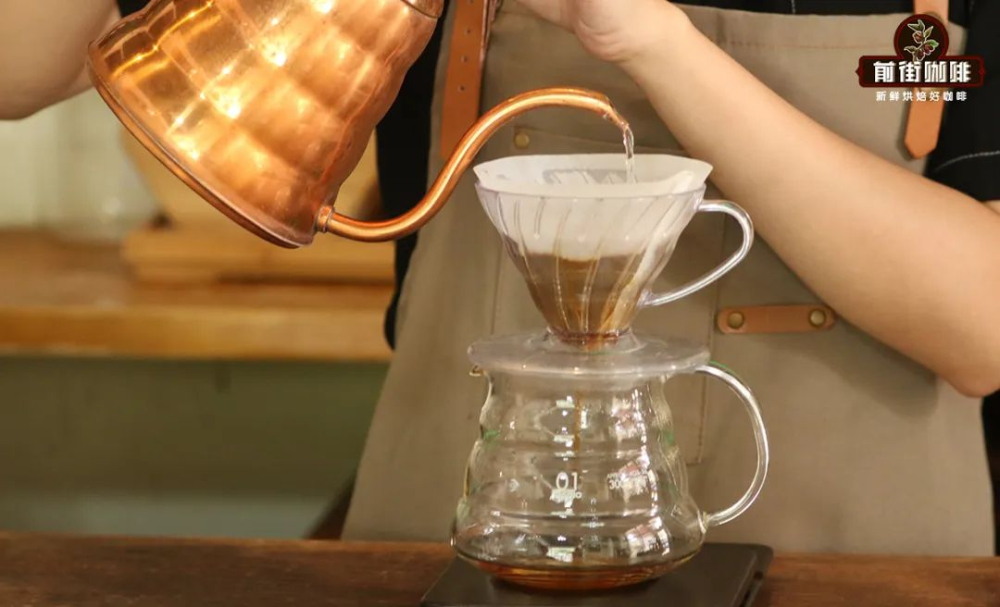What is the effect of hand-brewed coffee with high concentration and low extraction? is black coffee with high concentration and low extraction rate good?
"High concentration and low extraction" is the direction of coffee brewing, which refers to the brewing scheme designed with "high concentration, low extraction rate" as the result. This brewing concept is being used by more and more people. You may not know this concept, but you may have already used this way to make coffee.

Let's start with the definition of "high concentration and low extraction" in front of the street, which has no actual data range to define what is high concentration and low extraction. It is just a concept, only used to distinguish it from the current concept of gold cup extraction. For example, in the gold cup system, we tend to choose the proportion of powder and water that has the greatest chance of hitting the gold cup area, such as 1V 16.7, so that when the extraction rate is 18%, the concentration is 1.16%; when the extraction rate is 22%, the concentration is 1.42%. The idea of using "high concentration and low extraction" is to use a reasonable and as low extraction rate as possible to obtain a higher coffee concentration, such as coffee with an extraction rate of 18% and a concentration of 1.42%. (these data are based on theoretical examples for ease of understanding.) this idea was first popular in the cooking competition of designated beans, and it is difficult to customize the perfect extraction scheme for this bean because there is not enough time to understand the specified beans. Therefore, it is the safest to adopt the cooking scheme with high fault tolerance. For example, the use of "high powder water ratio extraction of high concentration and low extraction coffee + Bypass to adjust the concentration" is the most common. Why does high concentration and low extraction have a high fault tolerance rate? In making coffee, we are most afraid of two situations, the first is not to flush out the taste of the coffee, and the second is to flush out the bad taste. High extraction rate can not only exchange for more complex and rich flavor, but also increase the probability of bad taste, so it is a high-risk and high-return scheme. On the other hand, if the extraction rate is as low as possible, it is not so easy to produce bad flavors such as bitterness. The high concentration has more room for adjustment, if the coffee is light, it is difficult to adjust, but if the coffee is strong, it can be adjusted in the form of Bypass. Through this extraction concept to make a cup of coffee that will not taste bad, stand in an invincible position. In addition to aiming at the fault tolerance rate, "high concentration and low extraction" also plays a prominent role in the middle and front part. whether it is to increase the amount of powder or reduce the amount of water, it is essentially to increase the ratio of powder to water, and the result is to increase the proportion of the flavor of the middle and front part. in order to highlight the flavor of the middle and front.

What is the specific operation of high concentration and low extraction? The main method is to adjust the ratio of powder to water, which is divided into active and passive. Active adjustment is directly in the brewing program adjustment, such as the normal brewing ratio is 1:15-1:16, high concentration and low extract version is adjusted to 1:13. This method is generally used in deep roasting coffee. Use 1:13 equivalent to 1:15 to remove the end of the version, because the deep-roasted coffee texture is more fluffy, coffee substances are easier to release. Reducing the amount of water injection can avoid the sweet and bitter taste with a slight sense of water in the latter section. It makes the coffee stronger and tastes better. However, there is also a deficiency in this way, that is, the aftertaste of the coffee will be a little shorter. Passive adjustment is the way of river closure, for example, you still fill the water with 1:15 powder, but you do not intend to let the coffee liquid finish dripping, but take the initiative to remove the filter cup by keeping 1-2 times the powder amount of water in the filter cup. So the actual powder-to-water ratio is 1:13-1:14. This also belongs to "high concentration and low extraction".

This method often appears in the rescue brewing, for example, in the brewing process, you found that the coffee powder layer is blocked, if you have to wait for the coffee liquid to finish filtering, the cup of coffee is likely to be bitter, and the closure is a chance. Then the resulting coffee liquid is actually a sign of "high concentration and low extraction" (low extraction does not mean insufficient extraction). Another situation is the scheme chosen to make up for the defects of the equipment. For example, the performance of the bean grinder is not good, and the particle value is very different. Then "high concentration and low extraction" is a good idea with high fault tolerance.
Important Notice :
前街咖啡 FrontStreet Coffee has moved to new addredd:
FrontStreet Coffee Address: 315,Donghua East Road,GuangZhou
Tel:020 38364473
- Prev

Can you judge whether espresso is good or bad by coffee fat? What is the fat crema of espresso?
People often hear people say, "to judge whether espresso is good or not, just look at the fat." The best espresso oil is delicate, rich and golden. " Can the taste of espresso be judged by the state of the oil? If you want to know whether this method is feasible, Qianjie only needs to give you two questions, namely
- Next

Do I have to use an ice blog for Dirty coffee? What's the difference between dirty coffee and latte?
Dirty coffee has always existed as a hidden menu on the front street, because in the front street view, Dirty is a "special" latte. Until one day, overheard the guest to his friend popular science, summed up is "Dirty is to use ice bok milk as the bottom, and then pour into the espres
Related
- Beginners will see the "Coffee pull flower" guide!
- What is the difference between ice blog purified milk and ordinary milk coffee?
- Why is the Philippines the largest producer of crops in Liberia?
- For coffee extraction, should the fine powder be retained?
- How does extracted espresso fill pressed powder? How much strength does it take to press the powder?
- How to make jasmine cold extract coffee? Is the jasmine + latte good?
- Will this little toy really make the coffee taste better? How does Lily Drip affect coffee extraction?
- Will the action of slapping the filter cup also affect coffee extraction?
- What's the difference between powder-to-water ratio and powder-to-liquid ratio?
- What is the Ethiopian local species? What does it have to do with Heirloom native species?

